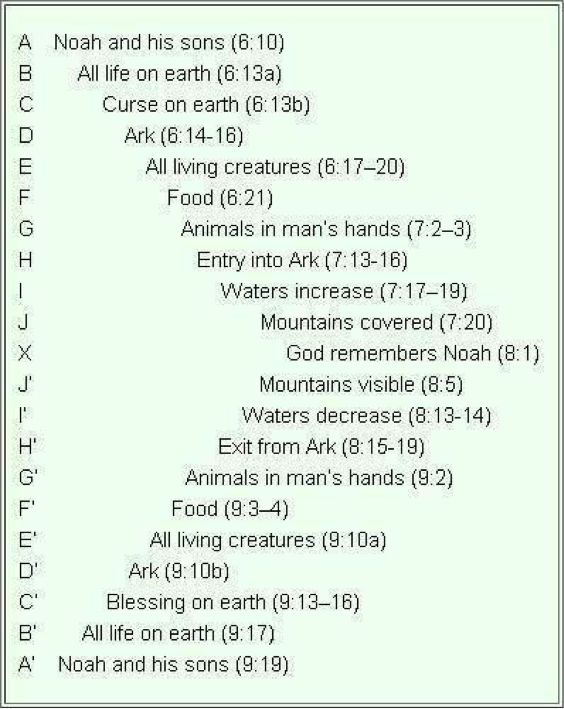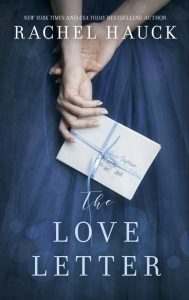by Rachel Hauck, @RachelHauck
Over the holidays my husband and I started chatting about chiastic writing, or chiastic structure, found in ancient literature.

Not going to lie. I’ve never heard of it. But once I started researching, I became enthralled.
Chiasmus, or the Chiastic writing/structure or “pattern,” is a literary technique used in narrative prose. It marries two ideas together that are similar in thought and form.
Chiastic structure creates symmetry, or balance, to the prose as well as the actual story structure itself.
The technique is sometimes called a cyclical, circular, or ‘ring’ pattern.
Chiastic, or chiasmus, means “criss-cross.” Symmetry of ideas is key. Chiasmus repeats or echoes similar ideas but not necessarily by using the same words.
A reversal of the same words is called antimetabole.
An example would be: “You forget what you want to remember, and you remember what you want to forget.” **
Chiasmus uses a poetic patter: A B B A. Or A B C C B A.
Chiasmus is mostly found in ancient text like the Bible. In fact, most of Scripture uses this structure.
The Iliad and the Odyssey use chiasmus.
My Book Therapy invariably includes some chiastic technique in our craft classes. Things like “What can he do in the end that he can’t do in the beginning?”
The structure often moves from a negative start to a positive end.
For example: “Kylie thought she’d never get married.” But the story ends with, “Kylie was getting married!”
I always try to end the story as it began.
In Sweet Caroline, the heroine enters the story confused about her life, driving a beat-up old Mustang. She leaves the story with a purpose in a big ole jet airliner.
In chiastic structure, it would look like this:
In her beat up Mustang, Caroline enters the story. Caroline leaves the story on a jet airliner.
A B B A
Mustang = A
Caroline = B
Caroline = B
Jet = A
See? Making sense?
Let’s look at more chiastic examples in sentence structure.
“She has all my love; my heart belongs to her.” *
She = A
Love = B
Heart = B
Her = A
See the crisscross?

The concept of love and heart are related. The sentence begins and ends with the feminine pronouns.
Similar/like concepts but with different words.
Chiasmus is an artistic approach to writing. It also adds an emotional impact and broadens our understanding of what the writer, or in our case, characters are seeing, thinking and feeling.
Want another one?
Genesis 7:21-22:
And all flesh died that moved upon the earth, both of fowl, and of cattle, and of beast, and of every creeping thing that creepeth upon the earth, and every man: All in whose nostrils was the breath of life, of all that was in the dry land, died. *
And all flesh died that moved upon the earth = A
both of fowl, and of cattle, and of beast, and of every creeping thing that creepeth upon the earth, and every man: = B
All in whose nostrils was the breath of life = B
of all that was in the dry land, died = A
Here’s an example from Isaiah 55:8-9
“For My thoughts are not your thoughts,
Nor are your ways My ways,” declares the Lord.
“For as the heavens are higher than the earth,
So are My ways higher than your ways
And My thoughts than your thoughts.
This passage uses an A, B, C, C, B, A structure.
Thoughts = A
Ways = B
Heavens = C
Earth = C
Ways = B
Thoughts = A
See how the like rhetoric and components are paired.
Thoughts and ways
Heavens and earth.
Is this making sense?
Let’s expand to chiasmus in the story.

Act 1:
It begins with Noah and his sons. The state of the earth is cursed.
Inciting incident: God calls Noah to build an ark.
We see the story world: food, man, and animals dwelling together.
Act 2:
Noah enters the ark, the rain comes and water increases, the mountains are covered.
X is the turning point. The God Factor.
God remembers Noah.
In your story, this would be the Man in the Mirror Moment. Or the Moment of Truth.
Even the Black Moment.
Before the X factor, ALL IS LOST.
Then God or some truth breaks in.
Act 3:
Then the story begins to turn around. Note how the structure reverses, beginning with the end of Act 2, before the X-Factor.
The mountains become visible.
Water recedes. Noah leaves the arc. Animals and man together. Food. Blessing on the earth. Noah and his sons.
The story ends the way it began but it moved from a negative, cursed place with a positive, blessing place.
Isn’t chiasmus cool?
I’m going to study this more. I’m at the tip of understanding it. I urge you to study it too.
In fact, the more you read Scripture the more you’ll find chiasmus automatically becoming a part of your voice.
And that alone is spreading the fragrance of the Word, and the unseen elements of a living God.
* https://www.litcharts.com/literary-devices-and-terms/chiasmus
** https://literarydevices.net/chiasmus/
From the New York Times bestselling author of The Wedding Dress comes a story of long-lost love and its redemption in future generations.
Set in stunning upcountry South Carolina, The Love Letter is a beautifully crafted story of the courage it takes to face down fear and chase after love, even in the darkest of times. And just maybe, all these generations later, love can come home in a way not even Hollywood could imagine.

New York Times, USA Today and Wall Street Journal best-selling, award-winning author Rachel Hauck loves a great story. She serves on the Executive Board for American Christian Fiction Writers. She is a past ACFW mentor of the year. A worship leader and Buckeye football fan, Rachel lives in Florida with her husband and ornery cat, Hepzibah. Read more about Rachel at www.rachelhauck.com.

